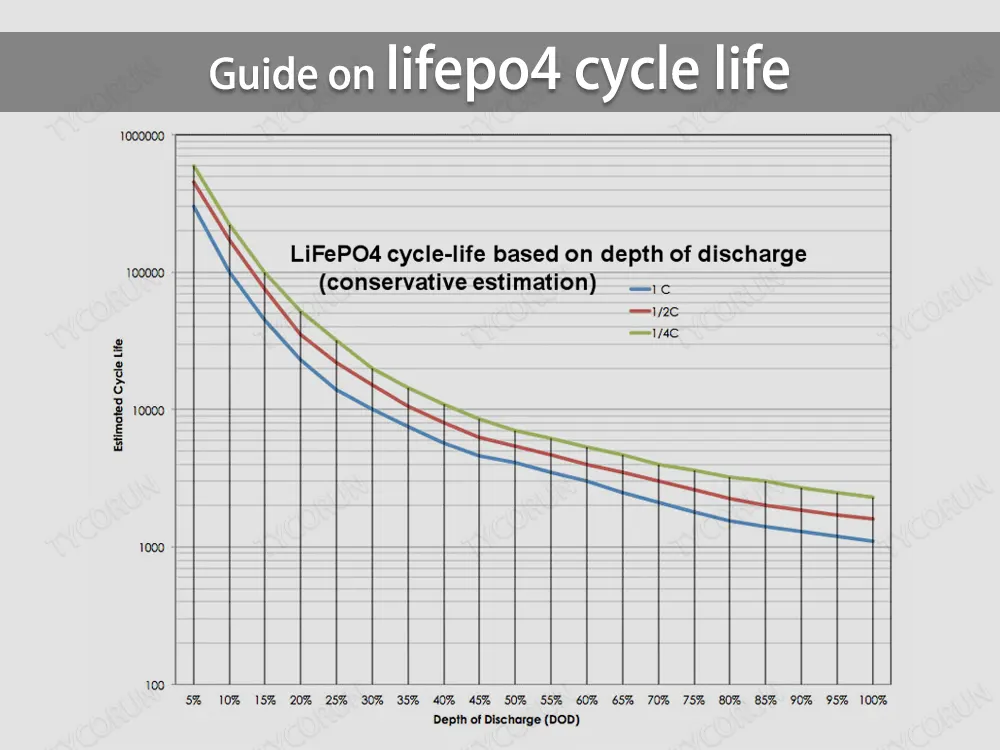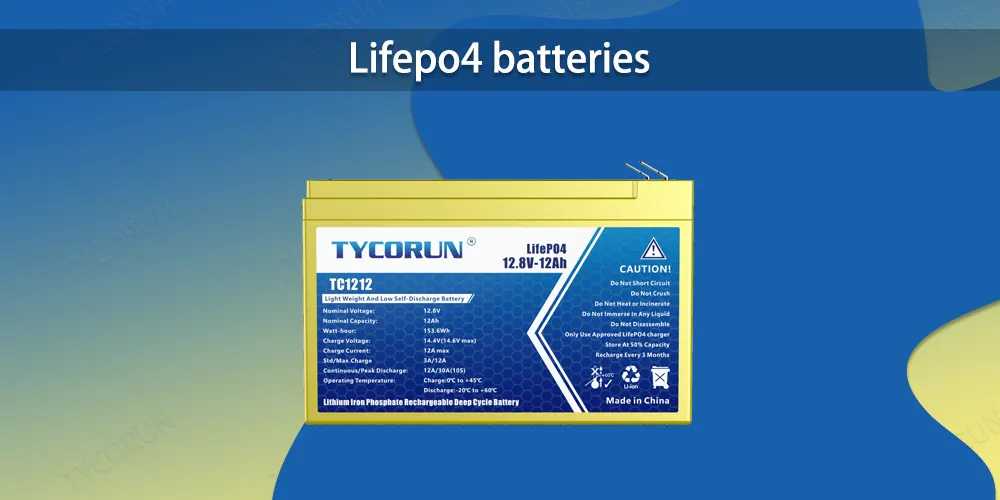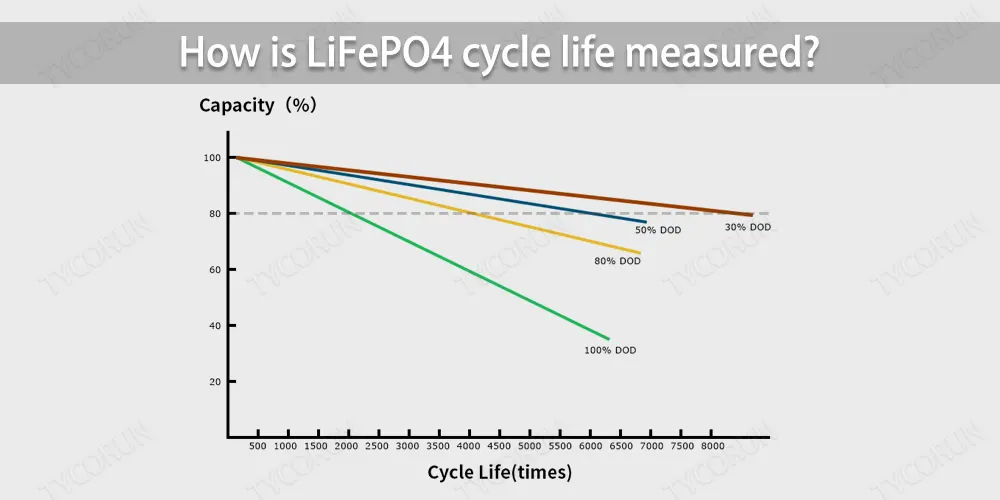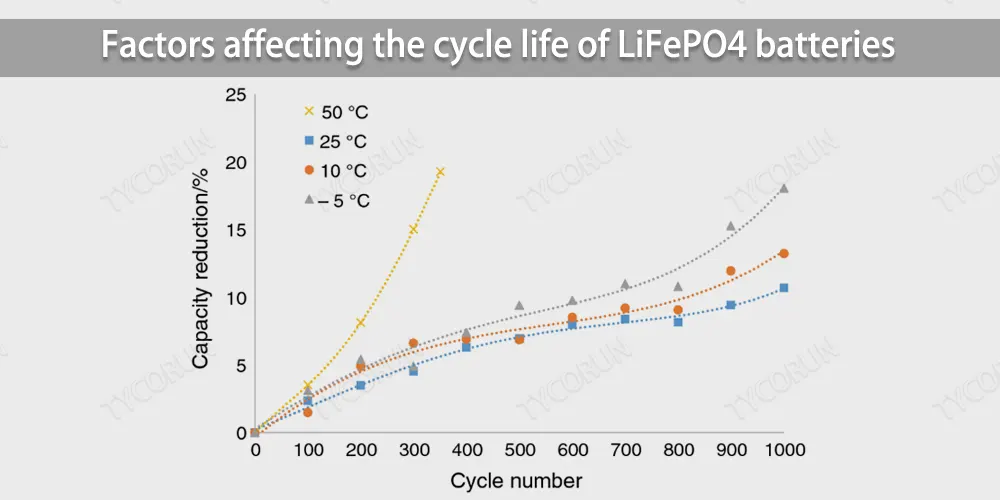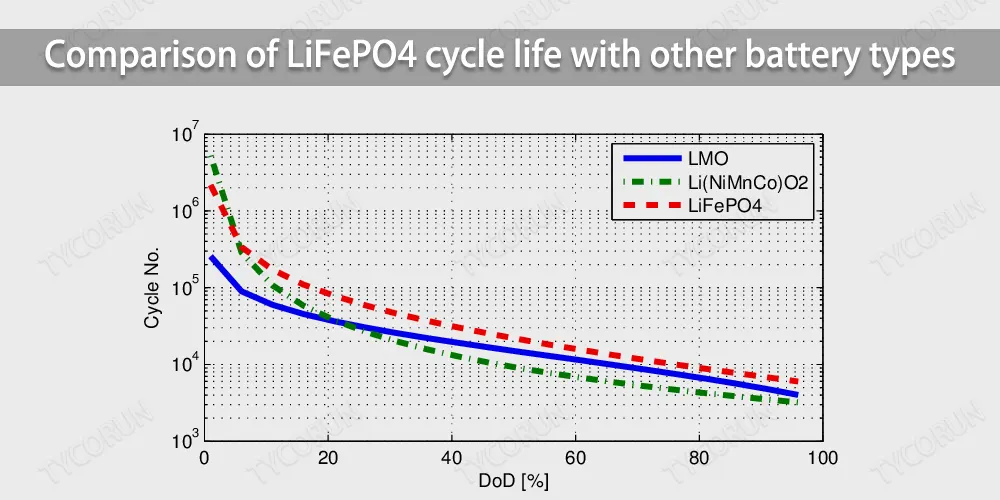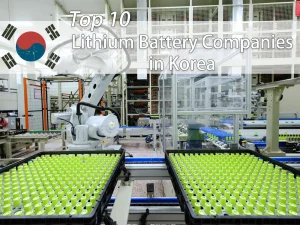Home » lithium iron phosphate battery » Guide on Lifepo4 cycle life
Guide on Lifepo4 cycle life
What are LiFePO4 batteries?
LiFePO4 batteries, short for lithium iron phosphate batteries, which are one kind of best rechargeable batteries.
Where lithium, iron, and phosphate is cathode and graphite is anode. These batteries are known for their higher performance and efficiency relative to their size.

They offer several benefits compared to lead acid batteries, including safety, faster charging, and long-lasting power.
They are widely used in flashlight, medical device, power tool, and other electronic devices due to their small size and lighter weight. Additionally, LiFePO4 batteries are considered environmentally friendly as they do not contain cobalt or lead.
What is LiFePO4 cycle life?
LiFePO4 cycle life refers to the number of charge and discharge cycles a battery can undergo before reaching a certain limit of specified capacity under specific discharge conditions.
One of the reasons LiFePO4 batteries are so widely sought after by a range of industries is that they are famous for having a long cycle life. Most LiFePO4 batteries have a cycle life of at least 2000 and sometimes more, which makes them perfect for applications where they will be used frequently.
However, a number of variables, including the battery’s quality, the charging and discharging conditions, and the operating temperature, will affect a LiFePO4 battery’s cycle life. To guarantee that the battery delivers dependable and durable performance for many years, proper care and maintenance are crucial.
How is LiFePO4 cycle life measured?
An accurate method to calculate the exact lifepo4 cycle life is still not known. As life cycle depends on several factors. An ideal life cycle can be calculated by the battery runtime. Find watt hours of the battery to calculate runtime.
The formula is as follows:
Usable capacity = DOD x nominal capacity
After calculating the value of the usable capacity multiply it by the rated voltage to get usable watt hours.
Usable watt hours = Rated voltage x Usable capacity
After finding the values for Usable battery Discharge hours, you can calculate battery runtime using the following formula:
Runtime = Usable watt hours / Applied load in Watts
The accurate value for the Lifepo4 life cycle cannot be found because various factors affect its value.
To measure Lifepo4 life cycle laboratory-controlled conditions are applied. Where the battery capacity is monitored under continuous charge and discharge cycles.
When the battery capacity drops from its predefined capacity level, i.e. 80% of its original capacity, that is 80% DOD, it is considered the end of its life.
What is a good cycle life for LiFePO4 batteries?
The cycle life of LiFePO4 batteries can vary depending on factors such as temperature, depth of discharge, discharging current, battery management, and the quality of the battery itself.
Generally, a high-quality LiFePO4 battery provides a cycle life ranging from 2000-4000 complete charge and discharge cycles or more.
This means the battery can undergo 2000 to 4000 cycles before its capacity drops below 80% of its original capacity. Basically, the batteries produced by top 10 lithium iron phosphate power battery manufacturers have good cycle life.
Factors affecting the cycle life of LiFePO4 batteries
LiFePO4 batteries are known for their efficiency, several factors can influence their performance and cycle life. These factors include temperature, depth of discharge, charging and discharging rates, storage conditions.
Temperature
Temperature plays a significant role in LiFePO4 cycle life. Higher temperatures can increase battery capacity but also decrease cycle life.
It is important to keep the battery within the manufacturer’s recommended temperature range to maintain optimal performance and longevity. Overcharging or overdischarge can lead to heat accumulation.
Depth of discharge
Depth of discharge refers to the ratio of the battery’s available capacity to its nominal capacity during actual use.
Manufacturers often provide a recommended depth of discharge to maximize the battery’s cycle life. Beyond the recommended depth of discharge, battery cycle life and performance will be significantly reduced.
Charging and discharging rates
The charging and discharging rates, as well as the selection of cutoff voltages, can also affect the cycle life of LiFePO4 batteries.
Higher working currents, lower discharge cutoff voltages, and higher charge cutoff voltages can decrease the battery’s life and overall performance.
Storage condition
Proper storage conditions are crucial for maintaining the cycle life of LiFePO4 batteries.
Factors such as storage temperature, optimal state of charge, protection from physical damage and moisture, and appropriate battery management systems all contribute to the expected lifespan and performance of the battery.
Comparison of LiFePO4 cycle life with other battery types
Here’s a detailed comparison of LiFePO4 cycle life with other battery types:
● Ternary Lithium Batteries: Ternary lithium battery typically offers 2000 complete cycles. These batteries are known for its high energy density, which makes them suitable for use in electric vehicles. However, its cycle life is lower than that of LiFePO4 batteries.
● Lead-acid Batteries: Lead-acid battery is a common type of battery and is commonly found in cars, boats, and backup power systems.
The batteries offer around 300 to 800 cycle life, which is lower than the cycle life of LiFePO4 batteries. Additionally, lead-acid batteries are heavy and require regular maintenance.
● Nickel-Cadmium Batteries: Although less common due to environmental concerns, Nickel-Cadmium batteries provide approximately 1000 to 2000 cycle life.
These batteries are known for their high discharge rate and long cycle life. However, they contain toxic metals like cadmium, which can cause harm to the environment.
In comparison, LiFePO4 batteries generally offer a higher cycle life compared to these other battery types. They are known for their long cycle life and excellent safety record.
Additionally, LiFePO4 batteries are lightweight and require minimal maintenance, making them an attractive option for a wide range of applications.
Where can I buy a LiFePO4 battery with a long cycle life?
There are various options available for purchasing LiFePO4 batteries with long cycle lives. Online marketplaces offer a wide range of LiFePO4 batteries from reputable companies.
It is recommended to search for your required battery, and compare different brands and their offers before making a purchase. Some retailers specialize in selling batteries and related products, and you can either visit their physical stores or check their online platforms.
Directly visiting the manufacturer’s website and ordering online can ensure the quality and authenticity of the product. Energy storage suppliers and local electronics retailers also offer LiFePO4 batteries for sale.
How can I extend the cycle life of my LiFePO4 battery?
To extend the battery’s Lifepo4 cycle life, it is important to follow recommended practices. These include:
● Avoiding overcharging or deep discharge beyond the recommended limits.
● Keeping the battery within the manufacturer’s specified temperature range.
● Using appropriate charging and discharging rates.
● Implementing proper storage conditions, such as maintaining an optimal state of charge, protecting the battery from physical damage and moisture, and utilizing a battery management system.
Conclusion
By implementing these practices, you can ensure better performance, and longer cycle life, and ultimately save time, money, and the battery itself.
With the advancement in technology, the demand for LiFePo4 batteries is also increasing. The reason is that LiFePo4 batteries have a longer lifespan compared to other types of batteries.
If you have other questions about lifepo4 batteries, please contact us.


